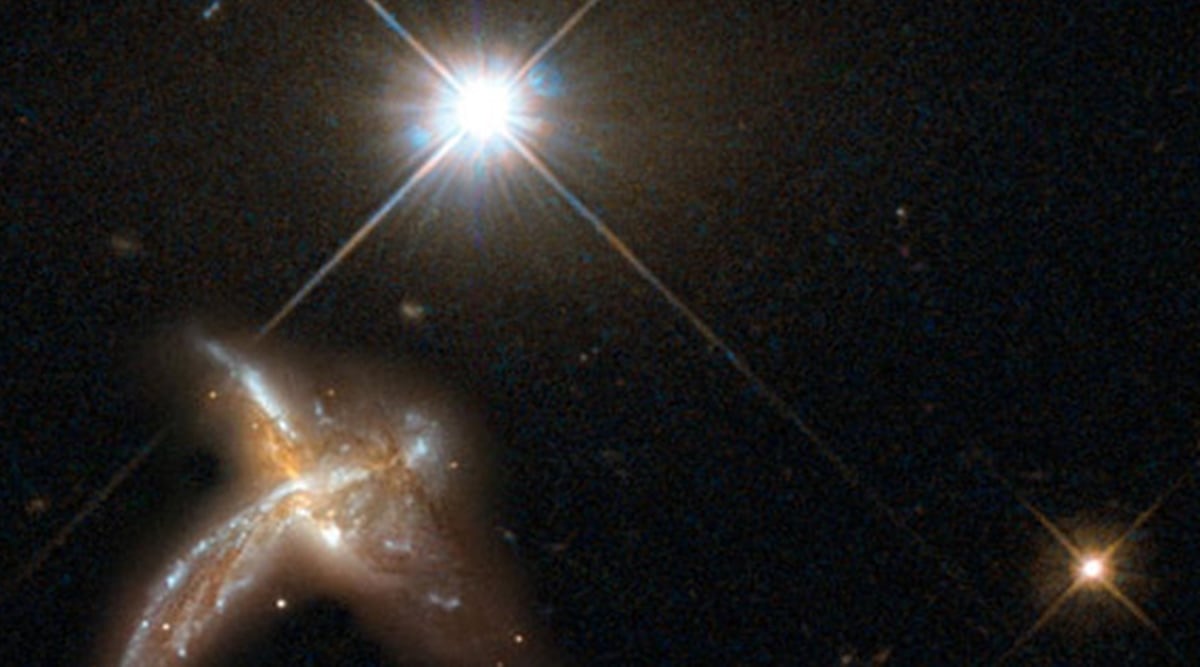 When galaxies completely run out of hydrogen gas, then the rate of star formation will further decline and eventually cease. (Representational/Source: Max Planck Institute for Astronomy)
When galaxies completely run out of hydrogen gas, then the rate of star formation will further decline and eventually cease. (Representational/Source: Max Planck Institute for Astronomy)A team of Indian astronomers has calculated the amount of hydrogen gas that contributed to star formation in the universe 10 billion years ago. It has also concluded that there is just enough hydrogen gas available to support star formation for another two billion years.
Hydrogen gas in galaxies condenses to form stars. Earlier studies had shown that the rate of star formation in the universe was at its peak between eight and 10 billion years ago, a period known as the ‘epoch of galaxy assembly’, but fell sharply thereafter. To understand why, scientists from Pune-based TIFR-National Centre for Radio Astrophysics (NCRA) and Raman Research Institute (RRI), Bengaluru, used the upgraded Giant Metrewave Radio Telescope (uGMRT) in Junnar to study the rate of star formation in 8,000 galaxies based on the available hydrogen gas.
“This is for the first time we know why the rate of star formation started declining eight billion years ago. Hydrogen signal observations emerging from distant 8,000 galaxies were stacked. They reveal that the availability of hydrogen gas has shrunk dramatically, thereby slowing down the speed of star formation,” said Aditya Chowdhury, doctoral student at NCRA and the lead author of the study, published in Nature on Wednesday.
With the supply of hydrogen gas inside these galaxies now depleting, Nissim Kanekar, also the co-author of the study, remarked, “The mass of the remnant hydrogen in the galaxies suggest that star formation would not go beyond another one or two billion years from now.”
Taking full advantage of the uGMRT offering improved sensitivity and frequency ranges, the Indian team scanned five locations in the sky for 100 hours.
Unlike stars that can be detected in optical wavelengths, atomic hydrogen signals are captured only using highly sensitive radio telescopes when tuned to 21 cm wavelengths.
On uGMRT, another co-author of the study, Jayaram Chengalur, said, “Earlier, the field of view of the sky was much smaller and making such detections were not feasible.”
KS Dwarakanath from RRI explained the limitations faced during previous attempts to study hydrogen gas inside galaxies. “The narrow bandwidth of earlier GMRT allowed us to cover only 850 galaxies,” he said. It is the uGMRT which made the study of such a large number of galaxies possible, said Chengalur.
When galaxies completely run out of hydrogen gas, then the rate of star formation will further decline and eventually cease, Chowdhury said.
???? The Indian Express is now on Telegram. Click here to join our channel (@indianexpress) and stay updated with the latest headlines
For all the latest Technology News, download Indian Express App.
© The Indian Express (P) Ltd


![[WATCH VIDEO] Kristina Koko In India Viral Video Story - Download Video Showing her Private Parts [WATCH VIDEO] Kristina Koko In India Viral Video Story - Download Video Showing her Private Parts](https://www.sociallykeeda.com/uploads/images/202402/image_140x98_65bdef6f1a7a4.webp)

![[WATCH VIDEO] Areeka Haq (14th) Valentine Video Leaked Scandal: Is It On Instagram, Youtube, Telegram [WATCH VIDEO] Areeka Haq (14th) Valentine Video Leaked Scandal: Is It On Instagram, Youtube, Telegram](https://www.sociallykeeda.com/uploads/images/202402/image_140x98_65d349d7732e5.webp)